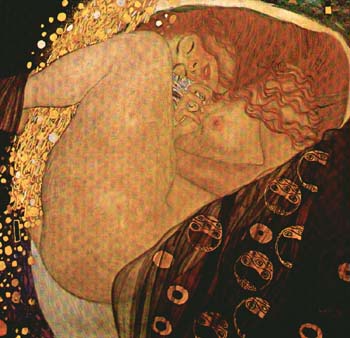|
|
Storia dell'arte - Story of Art
|
|
|
1900
Throughout the XXth century developed a intent of reaction to the Conventionality and a reaserch of the sincerity if Primitivism. A new Style called the Fauvisme started with Paul Gauguin and Vincent Van Gogh. the aggressive Expressionism, which sometimes brought to the deformation of the subjects is perfectly represented by some very important artistsof that time Matisse, Derain, Braque. Some of those artists, then, changed their style into the Cubism, some others found a religious inspiration; Matisse used a violent vision of light and color with no conventional schemes. The love for the puerile art and for the common aspects of life the interest for the magic, provided the basis for a new style, which had no connections with the cultural life: the Art Naif (Henry Rousseau). The Expressionism started in Germany and was based on simple forms, sometimes intentinally deformed or made with violent and exhagerated colors (Munch, Ensor). The Style “Brucke” started also in Germany and was characterized by a desperate pessimism(Kirchner). Another similar style was created in Munich and it was called “Der Bleuer Reiter” with some great artists like Kandisky and Marc. The “école de Paris” in France realized a fusion between two cultural movements, the “Fauves” and the “Brucke”. in 1907 woth Picasso’s work “Le Domoiselle d’Avignon” started the “Cubism” that tried to express the totality of the space, the three dimensions on the painted surface. The works of Picasso and Braque, especially those of “Still Life” divided the objects and the space, through the superimposition of many views of the objects. In the second period of the Cubism there were a lot of collaborations between Picasso, Braque Gris that started to come up with the idea of a Geometric Abstractism. In the first years of the century started some others Artistic Movements: the Dadaism in 1916 for example. Throughout all the century we connot recongnize a real division among the artistic movements, the most important artists took part to various styles. In 1910-18 the Futurism had a big success in Italy, it proposed a rebellion against the traditional life, it refused the relationship between space and time. Some principles of the futuristic vision of life had been appreciated even by the Fascists for a short time. Umberto Boccioni was the most important artist of the Futurism. Carlo Carrà, Ottone Rosai, Gino Severini, Ardengo Soffici, Mario Sironi started from a futuristic style and then became more original. In 1918 the Metaphysic painting got short but relevant success in Italy. Giorgio De Chirico was the most important exponent; the charateristics of that movement were: The immobility of subjects, wich represented the loss of indivudual Identity , the loneliness (solitude) of the contemporary human beings, random combinations of history ad time, the use of antic statues with modern and violent colors. The artists who belonged to that style were: De Chirico (Le Muse Inquietanti, il Trovatore) Carrà (Idolo Ermafrodito, Ovale delle Apparizioni, Cavaliere dell’Ovest Camera Incantata), Giorgio Morant, Enrico Baj (Paintings of Bin Laden and Mullah Omar). enrico Baj used a tecnique called Dripping. After the short futurist stop, the Fascism peferred a Classic Style. The “Movimento del Novecento” in 1922 was created by artist like Sironi, Pietro Morussing, Ubaldo Oppio, Anselmo Bucci. The reaction of that Culture was the formation of other artistic schools: “Gruppo de Sei” in torino, “Scuola Romana” in Rome, “Gruppo di Corrente” in Milan. Amedeo Modigliani was one of the greatest artists of the century and he was inspired by the Italian Style.
|
|
|
